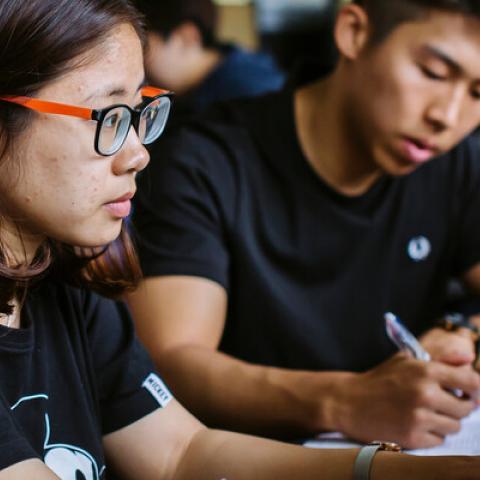
Being an effective team means more than getting along. Assigning team roles and supporting your group is vital to work effectively.
Understanding and using team roles can improve team performance and reduce stress. This page looks at how to allocate roles to the individuals in your team.
Team roles
These team role descriptions are broad to give you an idea of the different characteristics which can be support each role. Most people have a mixture of traits and can fit more that one role. A team member can perform multiple roles, hold a second role in a back-up capacity, share roles, or hold two roles equally. This depends on the number of people in your group.
In your first team meeting, you should share and discuss how you prefer to work and learn. This will help you consider you all learn and work, and indicates where your team strengths lie. It can also highlight if there are any gaps which need to be adapted to and managed.
Use the Team Roles table below to allocate team members a role. This table focuses on the types of team role and their strengths and weaknesses, and uses a simplified version of Belbin’s (1993) model of team roles from his book, 'Team Roles at Work' (updated in 2010).
Team roles, strengths and weaknesses
| Team role | Strengths | Weaknesses (acceptable) |
|---|---|---|
| Plant | Envisioning. Thinks ‘out of the box’. Generates inventive solutions. | Can lack attention to detail. |
| Resource investigator | Outgoing. Networker. Prefers unusual options. | Can be unrealistic. |
| Co-ordinator | Leadership. Catalyses decision-making. Shares work. | Can pass own tasks onto others. |
| Shaper | Energetic and likes deadlines. Not fazed by barriers. | Can lack sensitivity to others. |
| Monitor-evaluator | Calm. Objective. 360 degree awareness of everything that is happening. | Can be a source of negativity |
| Team worker | Empathic. Mediator. Sensitive to others' feelings. | Can find decision-making under pressure hard. |
| Implementer | Coverts concepts into reality. Rigorous. Dependable. | Can take time to adjust to new realities. |
| Completer | Attentive to detail. Precise. Meets deadlines. | Can be reluctant to share tasks with others. |
Next, explore how each group member’s learning style, characteristics and preferences relate to other possible roles to develop your team. Use the Learning Styles and Roles table as a guide. This process may involve disagreements and challenges; some people feel very able, or less able or confident, in some areas, but others in the group may disagree with their self-evaluation. Open and honest discussion, presented respectfully and politely, are vital if the whole team is to work effectively for the good of the whole team.
Learning styles, roles and strengths
| Learning style | Team role | Traits |
|---|---|---|
| Activist | Plant | Developing/delivering presentations, contacting/liaising people, solving problems. |
| Resource investigator | ||
| Pragmatist | Co-ordinator | Chairing meetings, planning and setting goals and deadlines, researching. |
| Shaper | ||
| Reflector | Monitor-evaluator | Maintaining team communications, identifying problems, progress chasing against plan. |
| Team worker | ||
| Theorist | Implementer | Collecting/Processing data and information, quality control, finalising detail. |
| Completer |
Discuss and negotiate member strengths and roles. Assign roles to use the strengths of the team members as much as you can. Open and honest discussion in the process develops communication between individuals, and helps to build rapport and trust. This helps your team identify current difficulties and possible future challenges, and to develop a firm foundation for dealing with future problems.
When allocating your team roles, consider:
- what roles your task or project needs
- your team needs
- the individual needs of team members
Gaps in your team are great opportunities for personal development, and you should assign key roles that are missing from your default styles to the person you think will fulfil the role the best. Some team members may not feel comfortable in new roles, so the whole group should supports them. If you have any problems or difficulties, try to acknowledged and openly discuss these with your teammates to find solutions.
Download our allocating and developing team roles revision sheet
Download this page as a PDF for your team building notes.








